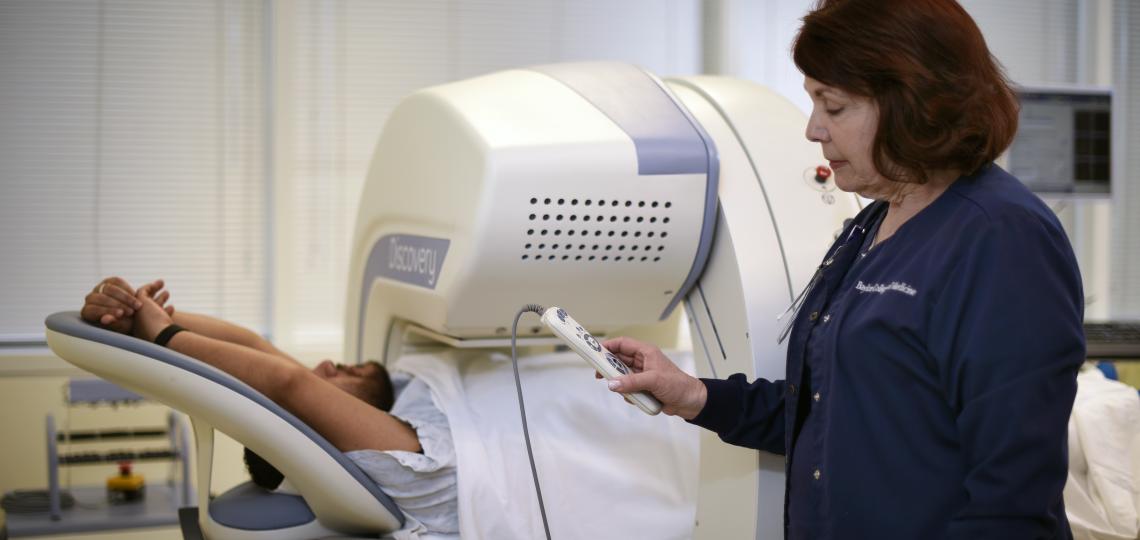An electrophysiology study or EPS is an invasive test that examines the electrical properties of the heart by the placement of special catheters inserted via the leg, arm, or neck. An EP study enables your physician to search for explanations for symptoms such as palpitations, irregular heartbeats, fainting, and near-fainting spells. It also helps your doctor decide on the best course of treatment (medicines, a pacemaker, defibrillator, RF ablation, or surgery) which can be done in conjunction with the EP study or scheduled at a later date.
How to prepare for the Electrophysiology Study procedure?
- Nothing to eat or drink overnight or at least six hours before the procedure.
- Remember to ask your physician for instructions about taking your scheduled medications especially if you are diabetic (on insulin or pills) and/or are taking pills that can make you prone to bleeding (i.e. Coumadin or warfarin, Plavix, or clopidogrel).
- Your doctor may advise you to stop taking certain medications before your EP study to ensure more accurate results.
- A chest x-ray, electrocardiogram (ECG), and blood work may be obtained. A urine pregnancy test is routinely obtained for all women of childbearing age.
- Get a good night’s sleep.
- An intravenous (IV) line will be inserted through which fluids and medicines can be given.
What occurs during the Electrophysiology Study procedure?
The procedure is usually a same-day admission. The EP lab is similar to the laboratory used for heart catheterizations. During the EPS procedure, you will be awake, but you may be given medications to help you relax. Electrodes will monitor your heart rhythm and rate. This may require that some areas be shaved in preparation.
You will be placed on a flat, cushioned table. The groin area is shaved, sterilized, and numbed so a sheath can be inserted. Through this sheath, temporary pacemaker catheters – about as thick as a piece of spaghetti – are placed in strategic areas of the heart. These catheters record electrical activity inside the heart and allow the physician to artificially "pace" or stimulate your heart. An x-ray machine in the shape of a large C will be placed directly over your body and maneuvered at various angles to allow your physician to watch the catheters and see that they are properly placed. You will receive only intermittent low doses of x-rays.
Your physician will then artificially create different heart rates and will watch for arrhythmias. He may also give some drugs that make your heart rate speed up in an attempt to induce or provoke arrhythmias. During the test, you may experience no symptoms whatsoever, or you may feel a rapid heart rate, skipped beats, light-headedness, chest pain, or discomfort. If you experience any of these problems, please let the physician know. Sometimes you may pass out briefly during the test or an abnormal rhythm may be induced, and it may become necessary to give your heart a mild electric shock to restore your normal rhythm. When you wake up, do not be alarmed if you find an oxygen mask covering your mouth and nose.
If no arrhythmia is found, the catheters are removed, the test is concluded, and you will be returned to your room. If your physician is successful in reproducing your arrhythmia, he may proceed with radiofrequency ablation or placement of a pacemaker or defibrillator.
If the decision is to proceed with radiofrequency ablation, your physician will then make a "map" of your arrhythmia. This electrical map tells your physician where the arrhythmia is coming from, what areas of the heart are necessary to keep the arrhythmia going, and more importantly, it tells your physician where to apply radiofrequency currents to get rid of your arrhythmia. EP studies usually last from two to four hours.
What occurs after the Electrophysiology Study procedure?
- After the catheters are removed, pressure will be applied to the puncture site just enough to stop the bleeding. No stitches are required but a sterile dressing will be applied and can be removed the next day.
- Remain in bed with your leg straight for anywhere between three to six hours. Nurses will assist you when it is OK to get up.
- Keep your head on the pillow.
- Inform the nurse if you have any warmth, pain, or swelling where the catheters were removed.
- If you need to cough, sneeze or strain, hold the dressing down firmly before doing so.
- You will be permitted to eat and drink.
- Your vital signs and catheter insertion site will be checked frequently.
The exact length of your hospital stay is determined by your diagnosis and the treatment option prescribed by your physician. With a regular, uncomplicated EP study, you can usually go home later the same day. If the procedure was long and complicated, or if a pacemaker or defibrillator was implanted, this usually requires an overnight stay.
When the bandages are removed from the catheter insertion site, you may notice a small bruise no larger than a quarter. You may also feel a small lump there. The bruise may become slightly larger and/or darker after you return home. Both of these are part of the body's natural healing process and should disappear completely within two weeks. If you notice a discharge, or feel feverish or become very uncomfortable, please call our office immediately.
Some patients may require no further treatment. Others may require any one of the treatment alternatives described below. Your physician will explain his/her findings and recommendations following your study. However, don't be afraid to ask questions at any time before, during, or after the procedure.









